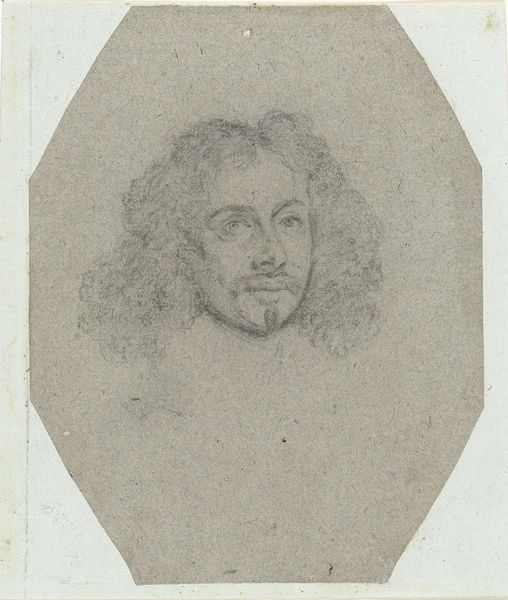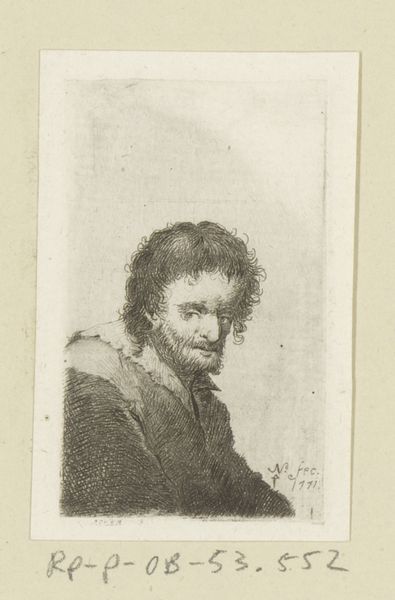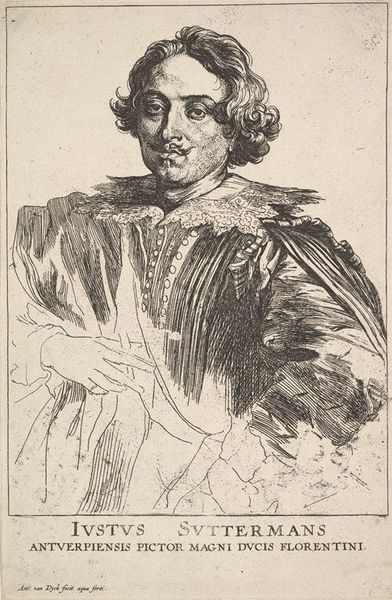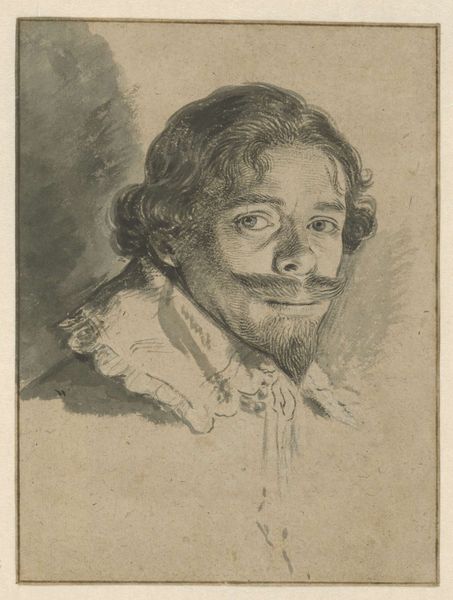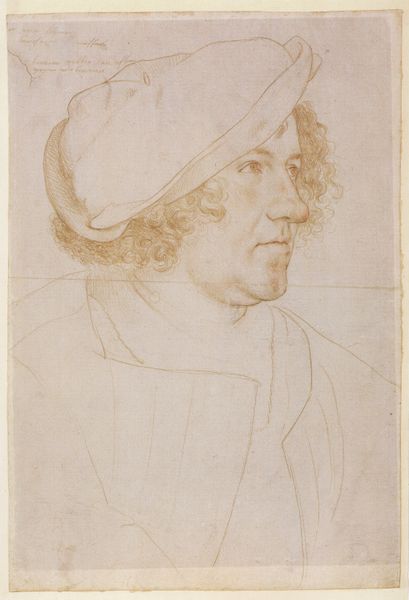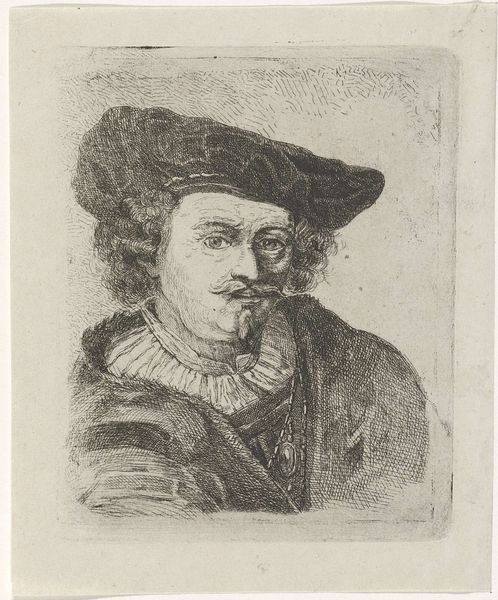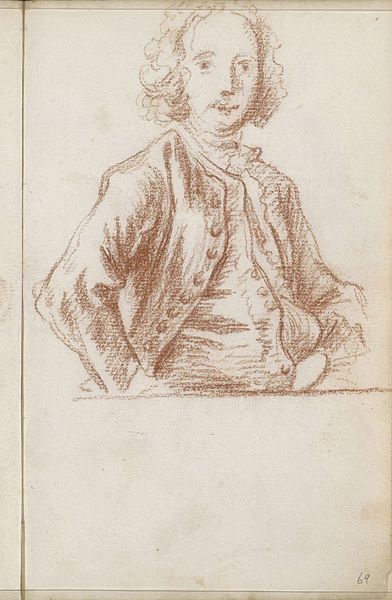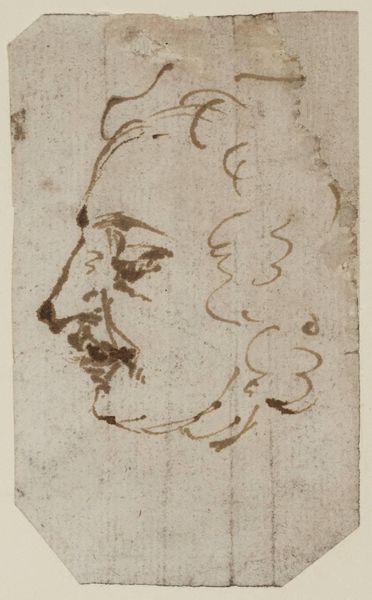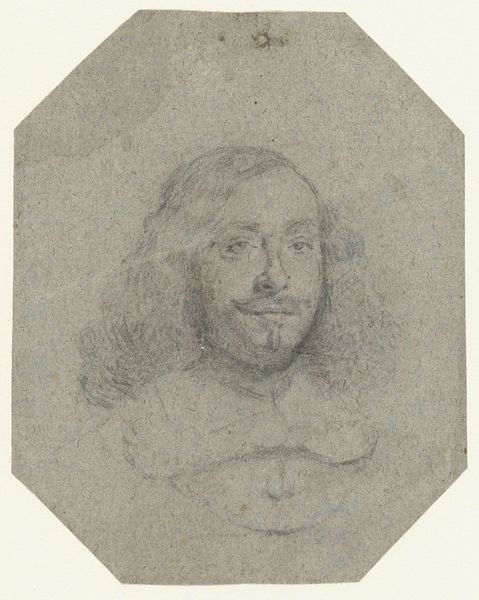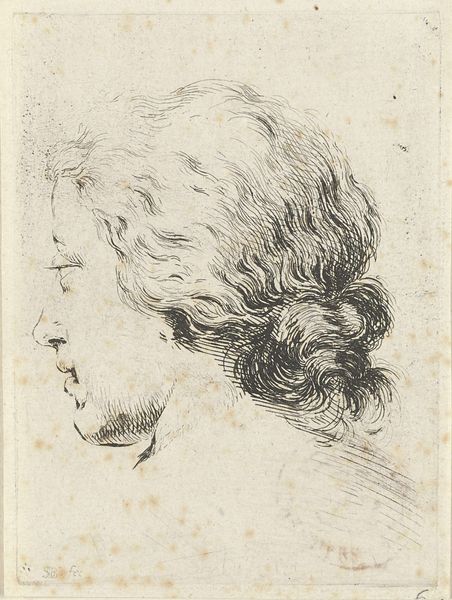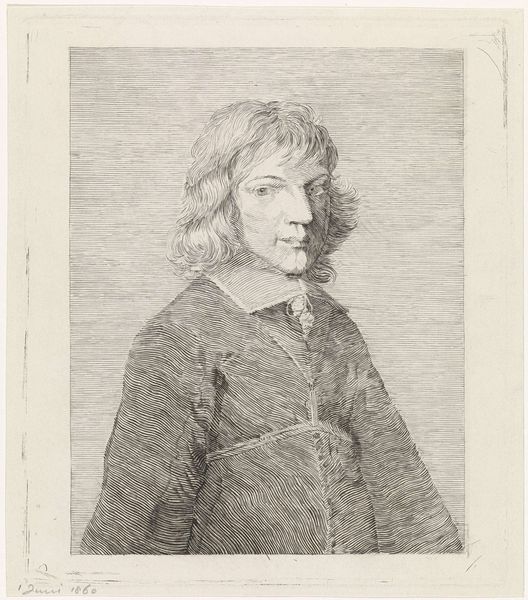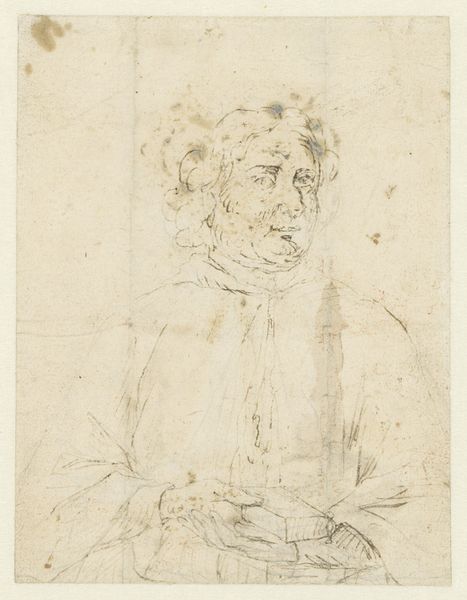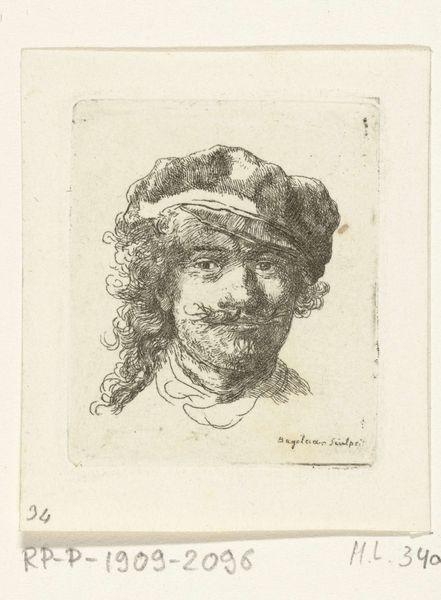
drawing, etching, engraving
#
portrait
#
drawing
#
self-portrait
#
baroque
#
etching
#
portrait reference
#
famous-people
#
male-portraits
#
engraving
Copyright: Public domain
Curator: Here we have a self-portrait by Anthony van Dyck, made around 1630. It's rendered in etching and engraving, a fascinating look at the artist through his own eyes. Editor: My first thought? Striking. And slightly melancholic. The etching is so delicate, almost ghostly, especially with that empty space dominating the image below the head. Curator: The negative space really draws your eye, doesn't it? Van Dyck’s masterful use of line creates depth, giving the portrait an almost three-dimensional quality. And of course, that’s an interesting point—to render oneself melancholic or self-reflective for a self portrait may also speak to the state of etching as an art-making tool, allowing the artists time and distance from the object that portraiture in oil, for example, would not allow. Editor: Exactly. And think about the process, though. Etching isn't just a 'drawing,' it involves acid, metal plates, resisting grounds... all to create this ephemeral image. There's a tension between the material demands and the fleeting emotion it captures. What about the prints circulation too? It is hard to think of portraits not made in oils as things of significant or enduring monetary or historical value, because those media were and still are seen to confer greater authority on both subject and artist. How did printmakers and patrons negotiate this distinction in the 17th century? Curator: It makes you wonder, what did he want to convey to the viewer through this medium? An honest, slightly vulnerable portrayal of the artist at a specific moment in time? You can almost sense his vulnerability but you know—there's that iconic Van Dyck confidence beaming through, as well. Editor: That's true! He certainly doesn't lack swagger, with that luxurious mustache and those curls! There's a level of controlled presentation at play as he performs his artfulness within the artistic community. I suspect the printing and the performance go together for that matter. Curator: Absolutely. It really does reveal an intimacy beyond just a surface level likeness. It shows him not only seeing, but choosing how to be seen, even now, centuries later. Editor: Yes, and it also shows him making technical and material choices in terms of making art. Van Dyck here isn’t only working on his persona; he's working through print, and playing the game along with those around him. It's powerful how technique can shape identity, then and now.
Comments
No comments
Be the first to comment and join the conversation on the ultimate creative platform.
